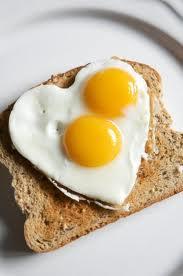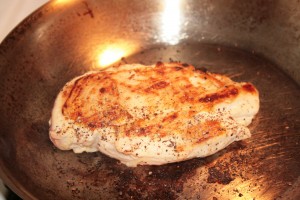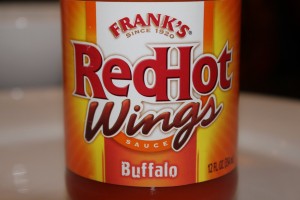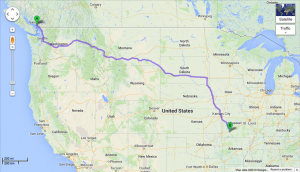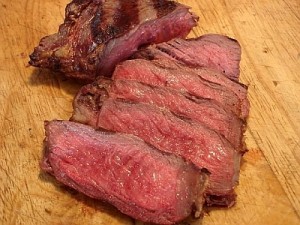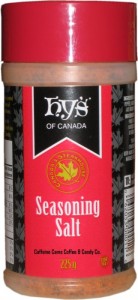Hey guys, it’s me Bruce, today I’m going to be talking to you about my food consumption for the past 24 hours and look at role of oil and what it took to make the food, and get it into my belly.
Most Important meal of the day… Breakfast:
I don’t have class until 11:00, so yesterday I woke up at 9:40, grudgingly got out of bed and went to the kitchen to get started cooking up my first meal of the day. I cooked myself 4 Western Family Large White eggs, with 3 pieces of Dempsters Whole Wheat toast.
The largest amount of oil used in the production of eggs, is in the egg farms, the farms are more like a factory than an actual farm. There is a large room with hundreds of chickens, which is kept well ventilated, and the temperature and humidity are strictly monitored. Fluorescent lighting simulates daylight, and are left on for 15 hours a day, the hens are fed 3 times a day with feed that must also go through a production process. When a hen lays an egg it rolls onto a convertor belt, and then is transferred to another conveyor belt. Automated equipment then places the eggs into plastic holders, where they are placed in a cold room where they wait to be shipped to a facility where the eggs are separated by quality. From there they are shipped to supermarkets. Surely this process uses a copious amount of oils and fossil fuels. The packaging for the Eggs is made from 100% recycled card board, now keep in mind that even though it is 100% recycled there still is a production cost that would used up some fossil fuels, but the amount is cut down down due to the process of using recycled paper. Western Family is a company based in Oregon, so there is a little bit of gas needed to move the eggs from there up to BC, however it is a lot less than if the eggs were coming from across the country, or even worse across the US.
Click here to see: How eggs are made
The bread used to make the toast in the morning is Dempsters whole wheat. The process of making bread is also very automated so there would be oil required to run machinery throughout the process. Dempsters is a company based out of Toronto so the cost of oil through transportation would be a little high, seeing as though the bread needs to be transported across the country. The packaging for the bread is a plastic type bag, plastic must be manufactured, so once again we see the use of fossil fuels in production and that’s pretty much it for breakfast.
Next up in the meal schedule is lunch.
For lunch I had a chicken breast, cooked with some Franks Red Hot Buffalo Wing sauce. Its not a very exciting meal but that is because i don’t have much time in between classes, and its fairly easy to make. All you have to do is turn the stove top on to medium heat, cut up the chicken breast into little cubes. Then put them on the stove and pour some Franks Red Hot on them while they cook, let them sit there for about 2 minutes, flip them over, let them sit for another 2 minutes, and they’re ready to go. Its quick and a fairly healthy choice as well.
The chicken I buy is the $12 fresh chicken breasts from Save On Foods. The chicken is farmed locally in BC, which cuts down the cost of oils substantially, any time it is only a short drive to have to food delivered to the grocery store instead of being transported across the country or from the States really helps to reduce the oils used. The chicken comes in a styrofoam container which is saran wrapped shut, this type of packaging is very easy to make and also requires very few oils in production. I had a tough time finding information on what processes the chicken go through until they are deemed edible and ready to be packaged, but in my opinion I think that it is one that uses far fewer oils than that of more manufactured foods, especially considering that it is locally farmed. Being locally farmed means that even if the chicken is brought to other places as part of the production of it, it is not travelling very far.
The Franks Red Hot company was originally based out of Cincinnati Ohio, but now all production occurs in Springfield Missouri, this means that to get from Missouri to British Columbia the bottles must travel across 7 States and a Province for a grand total of 3441 kilometres traveled until they get onto the shelves at our UBC Save On. As you can imagine this requires a large amount of oil solely in the transportation process. The packaging for the hot sauce comes is a glass bottle, glass bottles are made from abundant, recyclable materials. It takes less energy to make a glass bottle than plastic or metal, so luckily what excess oil is used in the transportation process, it is saving in its packaging, however there are still some oils used as it is a highly automated process. The production of hot sauce is fairly oil healthy as well, there is a lot of man labour that is put into making the sauce, such as picking the peppers, hand mashing them, pouring them into a barrel and adding a salt layer to the top. The only automated part is mixing with vinegar after a 3 year fermentation process to smooth out the sauce, all this use of physical labour helps to reduce the amount of fossil fuels needed for production.
Click here to see: How glass bottles are made
Dinner Time :
Dinner is personally my favourite meal of the day, mainly because all of my favourite foods are those that are normally eaten for dinner. My all time favourite meal is steak, and lucky me, I had it last night. The steak is a strip loin from Western Family, the same company that produces the eggs I used in the morning for breakfast. Once again the company is based out of Oregon, so it is a short distance for them to be shipped, which allows for a reduced oil tax. Stakes are another type of food that require a lot of man labour, even further reducing their oil tax. The steaks come in a vacuum sealed plastic wrap. There is not a lot of material to it, so I cannot imagine that the production of the wrap uses too much fossil fuels.
Before I cook the steak, I layer it in some Hy’s seasoning salt, just to give it some added flavour. Hy’s is a Canadian company based in western Canada, so the cost of oil on delivery is lower due to the reduced distance it must travel in order to be put on our grocery store shelves. Hy’s Seasoning salt comes in a plastic container which is fairly easy to produce, the process is automated though so there is some use of oils, but it is reduced compared to other possible forms of packaging. The production of the salt is where the majority of the oil is used, salt is a natural mineral that must be mined in order to extract it from the earth. The mining process uses heavy machinery to dig, collect, and transport salt around the site which uses up tons of oil.
It is really surprising when you stop and think about how much oil is actually used in order to get food on our table. It’s often easy to think we are living a very “green” life when we make conscious decisions to attempt to cut down our carbon footprint, when really there are things that we don’t even realize effect our environment in such a detrimental way.

